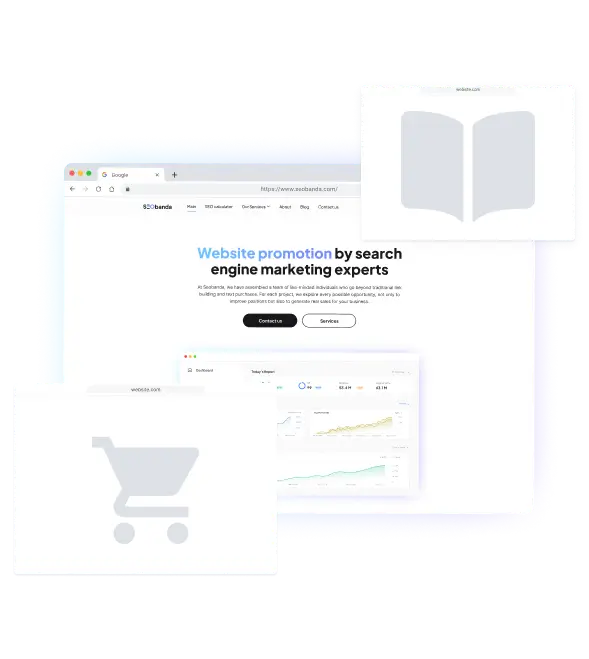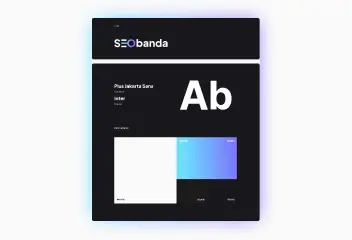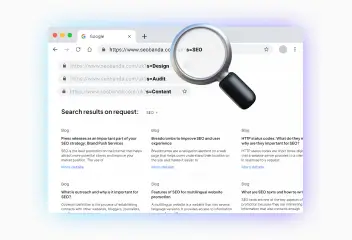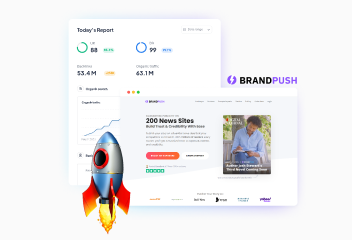Types of websites: What they are and what they are used for
There are many different types of websites for different needs, and each of them is suitable for a particular function. Some sites are created to sell goods, others serve a purely informative function, and some sites serve as a business card for a company. Let’s find out what types of websites exist and what features they have.





What types of websites exist?
Corporate website
Purpose: to represent the company on the Internet, provide information about its activities, products, and services.
Features:
- Home page: Basic information about the company, key products or services.
- About us pages: Company history, mission, values, team.
- Products and services: A detailed description of what the company offers.
- News and blogs: Updates on company activities, articles, research.
- Contacts: Address, phone numbers, feedback form.
Online store (e-commerce site)
Purpose: Selling goods and services online. The task of such a site is to interest users in the product and increase sales.
Features:
- Product catalog: Sorting products by category, filters for search.
- Product card: Description, price, photos, reviews. Providing complete information about a product or service.
- Shopping cart: A list of selected products for purchase.
- Payment system: Payment options (credit cards, PayPal, etc.).
- Customer support: Live chat, FAQ, contact details for feedback.
Landing page
Purpose: Converting visitors into leads or customers through a specific offer. As a rule, users are redirected to such sites from social networks. SMM strategies involve advertising that links to single-page sites with a specific product.
Features:
- Single-page design: Focusing on one specific offer.
- Call to action (CTA): Buttons to collect contact information or make a purchase.
- Data collection form: Fields for entering contact information.
- Attractive visual: Images, videos that support the offer.
Blog
Purpose: Publication of articles, news, reviews on a specific topic. Usually, such sites are informative and designed to provide users with useful information.
Features:
- Articles: Regular publications on various topics based on the needs of users.
- Comments: The ability to leave feedback and comments on articles.
- Categories and tags: Organization of content by topic. For this purpose, a clear content plan is created, which provides for the division of articles by topics.
- News subscription: A subscription form for receiving new articles.
News site
Purpose: Publication of news, articles, and reports. News sites can be similar to blogs, but they have some differences. News sites are aimed at providing up-to-date information about current events, while a blog expresses personal opinions, experiences, advice, etc. The frequency of updates and writing style also differ. News articles may be published several times a day, while blogs may be published several times a week or a month.
Features:
- Frequent updates: New content is added regularly.
- Various sections: News, politics, sports, culture, etc.
- Multimedia content: Photos, videos, infographics.
- Comments and discussions: Platforms for interaction with readers.
Forum
Purpose: Discussion of various topics between users, exchange of opinions and practical advice.
Features:
- Structure of topics and subtopics: Organization of discussions by topics and interests.
- User profiles: the ability to create personal accounts, avatars, signatures, and ranks.
- Moderation: Rules of behavior and control over discussions.
- Private messages: Possibility of personal communication between participants.
Business card site
Purpose: A brief introduction of a person, company or project. The main difference from a corporate website is that the information is presented minimally and the main task is to briefly tell about the company’s activities.
Features:
- Minimum number of pages: Concise information.
- Contact information: Email, phone number, address.
- Brief description of the activity: Basic information about the person or company.
Portfolio
Purpose: Demonstration of works or projects of a specialist, designer, company, etc. Usually such sites (as well as business cards do not attract customers, but are sent to potential customers as an example).
Features:
- Gallery of works: Photos, video examples of work.
- Project descriptions: Details of each work, creation process, results.
- Biography: Information about the author or company, experience, skills.
- Contacts: Feedback for potential clients.
Online service
Purpose: Providing certain services via the Internet (e.g., online editors, schedulers).
Features:
- Interactive features: Tools for completing tasks online.
- User registration: Accounts, profiles.
- Working with data: Storage and processing of user information.
Social network
Purpose: Interaction and communication between users.
Features:
- User profiles: Personal information, friends, subscriptions.
- Publishing content: Statuses, photos, videos.
- Groups and events: Communities of interest, organizing events.
- Messaging: Private and group chats.
Encyclopedia site
Purpose: Collecting and organizing knowledge on a specific topic.
Features:
- Content editing: Possibility of making changes by users.
- Hyperlinks: Interconnection of articles for full disclosure of the topic.
- Structured information: Data organized by topics and subtopics.

Increase visibility
for your business: SEO solution for growth!


Website optimization

Most websites need at least minimal optimization. If you don’t want your site to be removed from indexing or have sanctions imposed on it, we recommend optimizing it right after it’s created. Further SEO promotion is important if you want to attract customers using your website. Usually, websites such as landing pages, business cards, and portfolios are not promoted on the Internet. But online stores, for example, cannot compete without promotion. They always set up appropriate meta tags, create unique content, and have a responsive design.


How to choose a website type?
The type of website you choose depends on your goals, audience, and resources. Here are some key steps and questions to help you make the right decision:
1. Define your goals
Question: What do you want to accomplish with your website?
Example:
If you want to sell products online, you need an online store.
If you want to present your company and its services, you need a corporate website.
2. Define your audience
Questions: Who is your target audience?
Example:
If your audience is customers looking for information about your products or services, a corporate website or online store would be a good choice.
If your audience is interested in a specific topic or wants to read personal opinions, a blog might be the best option.
3. Determine the type of content
Question: What type of content do you plan to publish?
Example:
If you plan to publish news and current events, you need a news site.
If you want to share personal opinions and experiences, a blog is the right choice.
4. Consider resources
Question: What resources do you have to build and maintain the site?
Examples:
If you have a team of journalists, you can launch a news site.
If you work alone, a blog or business card site may be more realistic options.
5. Determine the required functionality
Question: What features should your site have?
Example:
An online store needs a shopping cart and a payment system.
A forum needs a structure for discussions and user profiles.
6. Consider your technical knowledge
Question: What technical knowledge do you have to manage the site?
Examples:
If you have no technical knowledge, choose a platform with a simple interface, such as a business card site or a blog on a ready-made platform (for example, WordPress).

Increase visibility
for your business: SEO solution for growth!


Conclusion
There are many types of websites and each of them is suitable for different cases. In order to choose the most optimal option, evaluate the role of this site and its future functionality. If you want to get a high-quality, beautiful, adapted and customized website, contact SEObanda and we will help you create exactly the website you need!
You may also like it

Brand identity: The key to brand recognition and SEO success
Every product has its own unique feature that sets it apart from other brands. It could be a special font, a unique mascot, or an interesting logo with the right...

What is a dynamic URL and its impact on SEO
A dynamic URL (Uniform Resource Locator) is a web address that changes depending on the user's request or specific parameters. It differs from a static

Press releases as an important part of your SEO strategy: Brand Push Services
SEO is the best promotion on the Internet that helps attract more potential clients and improve your market position. The use of press releases is an important SEO...












